All Geek Pop Culture News
The Untapped Potential of Mature Western Animation

The Medium of Film is one that is as broad as can possibly be. The range in storytelling and creative visions under the artistic medium of moving pictures is as vast as the imagination can handle. With as vast as it is now studios have been relying on digital techniques to create believable sequences on the screen and in a way that little bit of work is in and of itself a form of animation. Animation is one of the most versatile and brilliant mediums of conveying a story that there is. It’s such an expansive tool that can be used for such amazing things, but there is an issue with how it’s culturally viewed. As someone who grew up in the US I’ve noticed a pattern that animation is often looked down upon in Western culture. It’s often seen as a childish medium and if an adult animated project is made it often results in a very low brow humor category. A question that I have had is that why we have yet to see an animated film made for an American audience garnered for a more mature crowd that doesn’t result in immature humor to be the driving force. The medium is so incredibly vast and so incredibly underutilized in a Western sense and it’s a topic I’ve been curious about exploring for some time. With this in mind it is a great opportunity to look back at Animation History in the US and see which films have broken the ground on being for adults and maybe find some answers as to why we have yet to see more Adult or Mature themed animated works.
Early Animation 1900-1960s

Animation is a form of art that predates film going back to the classic use of flipbook style to make the images move as well as the zoetrope which was a device you looked through that gave still images the appearance of movement. While all of these steps are crucial in its history the earliest animated works presented for larger audiences didn’t make their way into popular culture until the 1900s with film. Animation was a part of film from the beginning, but in 1928 Disney’s Steamboat Willie was the first animated film to use synchronized sound, which was a breakthrough at the time seeing as the silent era was in full effect. In 1927 the film The Jazz Singer was the first feature film to use Synchronized sound just a year prior. This movement to sound was crucial in its development not only in live action, but in animation as well.
The 30’s came along and synced sound became the norm with Warner Brothers and Disney taking the reins on the popular trends. These cartoons would often play as shorts before the feature films in theaters, but a newcomer in the form of Max Fleischer made some marks in the category creating some of the most popular characters of all time including Betty Boop. The cartoons with Betty Boop were certainly much more mature than that of Disney. Fleischer’s cartoons were filled with innuendo and they were darker. A lot of these films were also products of their times having extremely racist portrayals of anyone that wasn’t white. The early cartoons were made for a more adult audience and they didn’t pander to a certain demographic. Things changed with the Hays code was passed which forced films to follow a certain “moral” guideline which involved censorship of certain things present in all of film. The next big thing to happen to Animation was that of the first feature length film, Snow White and the Seven Dwarfs in 1937. This move toward feature films changed everything.
The 1940’s brought on World War 2 and it animation was dominated by war propaganda cartoons from almost every major studio including Disney. These films present a fascinating time capsule in that they are filled with caricatures of not only Adolf Hitler, but also very racist caricatures of Japanese people. These films were also extremely popular and they marked an end of an era as we see a movement towards Disney making more feature films before television is introduced in the 1950s, which led to the animation juggernaut Hanna-Barbera making a multitude of animated shows that were television friendly and they used a lot of techniques to make animation more efficient, but it also meant cutting corners. The biggest hits from them included Scooby-Doo and The Flintstones. The Flintstones was the first animated show on prime time. This company while making improvements and changes to animation also was hindering in some respects and there was this feeling among people who loved the craft of animation. The cutting of corners in the style wasn’t helping animation grow. Little did anyone know a change in perspective was just around the corner.
Counterculture Movement
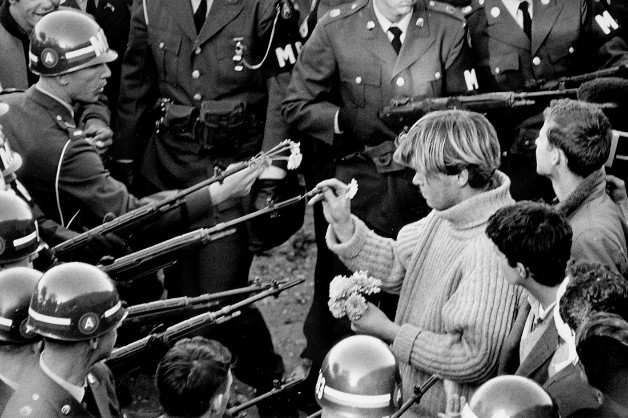
The Cold War was still raging and there was a lot of tension. The 1950’s prepared people for a potential nuclear war, which didn’t happen. The 1960’s continued this fear of Communism and in 1963 the unthinkable happened in that President John F. Kennedy was assassinated. This sent shockwaves through the nation which lead to LBJ taking up office and leading the country head first into the Vietnam War. There was a near mandatory draft and while the Government was busy conducting war the citizens were working towards peace. The Civil Rights movements were still in full effect as well as expanding to include feminist ideologies and a huge cultural shift. The Hippy movement was born and it indulged in drugs and new types of music. This not only changed how young people thought and acted, but the art changed as a result. Hollywood took notice and moved to capitalize allowing new filmmakers to make bold entries in cinema. These bold changes led to the establishment of the MPAA allowing a rating system which in turn gave filmmakers the freedom to not be censored anymore.
This counterculture movement allowed for some of the greatest works of art to be created including some of the best films of all time. As we move more into the 70’s we had some incredible live action films, but animation also snuck it’s way in with some really experimental and fascinating experimentation as a result.
Ralph Bakshi & 70’s/80’s Experimentation

While the late 60s and into the 70’s brought in a whole group of new and experimental filmmakers there is one name that really came forward as a pioneer and changed animation forever. Ralph Bakshi had been a veteran working in animation starting in 1956, but by 1971 his position and his creative directions were beginning to shift. He was able to move to a position where he had the opportunity to adapt the popular Fritz the Cat comic from Robert Crumb into a feature film. The film was released in 1971 and a huge selling point for it was that it had earned the highest MPAA rating at the time, which was an X rating. This film is a fascinating film to look at because not only is it one of the first very adult animated projects, but it also was a social satire on American society in that time period. It’s an animated comedy that was smart enough to take a look at what was happening in the World and reflect that. His follow up film, Heavy Traffic also took a good hard look at life as an American and held a mirror up to society.
Bakshi went on to make some very interesting films afterwards including that of the animated The Lord Of The Rings, Wizards, and American Pop. Each of his films built the foundation of telling more mature narratives in Animation. Whether it be for satire or fantasy Bakshi understood the art behind animation and broke the mold. It wasn’t a standard that lasted, but it did set the groundwork for animation to be allowed to go in more adult places for Western audiences.

Another notable film that was released in 1981 was Heavy Metal. Based on the magazine title of the same name. It is an anthology film with different short films based upon the comics that appeared in Heavy Metal magazine. The film is a beautifully ugly film that I love. It’s sophomoric and immature, but it still influenced many people. It dived into science fiction, comedy, horror, and fantasy with ease in an R rated feature film. While definitely not as smart or introspective as Bakshi’s work it’s certainly a film worthy of exploration on it’s own and it is certainly a notable example of animation geared towards adults.
90s-00s

The 1980s didn’t have many notable adult films in the field of animation, but the beginning of the 1990s had a major shift in television with the introduction to one of the most respected and longest running shows of all time. The Simpsons began as shorts on the Tracey Ullman Show, but quickly gained enough popularity to get a Christmas Special in December of 1989 which led into a full on Season. The show broke ground in that it was an animated show geared for an older crowd. While kids did and have continued to watch it the show itself is much more adult oriented with more mature humor than that of family programming. The show quickly gained popularity and spawned a turn in tide to how adult animation is viewed. Through the lense of comedy.
The 90s also brought forward Beavis & Butthead which was also extremely popular and forever changed how MTV operated giving rise to other adult animated shows on that network during the time including Aeon Flux. A show that often delved into the strange and uncomfortable with a unique animation style. They also premiered Celebrity Deathmatch which was a stop motion show with an over the top emphasis on celebrity parodies and gore.

In addition to these MTV shows another cable juggernaut, HBO were able to secure the rights for Todd McFarlane to adapt his extremely popular comic, Spawn into an animated series. When I mention that I would like more mature variety in animation for a Western Audience the Spawn series is an excellent example. It accurately adapted the character into a series that didn’t hold back. It was dark, violent, and definitely made for adults. It didn’t last long, but was critically acclaimed and deserves a mention here.
While Spawn hit the more mature angle most adult animation quickly turned to sitcoms. South Park on Comedy Central quickly rose to the top and became one of the most loved shows of all time. It’s crude animation and extremely crude content made a name for itself and helped shows like Family Guy to come about. It helped to create the wave of comedic adult animation that has dominated Western audiences television and films ever since.
Modern Animation

The Modern trend in most animation is still the pervasive levels of comedy with hit shows such as Archer and Rick & Morty making excellent contributions. Archer has been going strong for years for FX delivering fast paced humor and outlandish characters while Rick & Morty have been busy delivering more complicated science fiction based humor. Both shows are excellent examples of good animation in their own right, but they are in a sense still comedies. There are more comedic animated shows now than ever and many of them are good while others aren’t. It’s an interesting time to be into animation as the internet is also contributing with the inclusion of streaming services. There are more places to see animated projects on than ever before, yet when it comes to Western animation it seems to either fall into two categories. Raunchy comedies or Family entertainment.
Expanding The Use Of The Medium

While I have yet to discuss the art of anime I will mention that in Japan Animation is used to tell a multitude of stories ranging from family adventures to horror to science fiction and to action. I’ve seen anime such as Ghost In The Shell reach beyond what’s expected and dive into much deeper themes. The anime film Grave of the Fireflies touches upon the horror of war. These examples take time to set themselves apart as mature and nuanced storytelling. Each genre is well represented in anime and this vast array of genre inclusion has not been a part of Western Culture. The medium of animation has been put into two categories and the use of animation has been minimized.
There have been some break out examples with one of the most recent films being Anomalisa which was a stop motion animated drama that was rather dark and introspective. Something along these lines is rare, which is why that film was an independent project. We have yet had the opportunity for a major studio to tackle something that can be a bit bigger and more broad. Animation not garnered towards family cartoons, but garnered for a general audience. There is a huge potential for success because of the unique avenues that animation can bring. It’s a medium that can be used to do and show the impossible without limitations. A great example of what I mean is that if you take a Hollywood action blockbuster. The cost of said production would be astronomical with need for actors, sets, crews, and top of the line special effects. All of these elements help make these possible, but in animation everything that is needed can be done without the risk of putting a crew in danger. A PG-13 animated feature film promoted at the level of a blockbuster film could be hugely successful and it’s bizarre to me that this has yet to be attempted.

On the other side animation can be used to move an audience. A drama with deeper themes that could even get dark with more violence or mature themes could be used as well. I’ve been hoping to see an R Rated noir storyline told in animation for some time. While there have been attempts like 2006’s A Scanner Darkly, which was a completely unique film in and of itself, there has yet to be something that truly broke ground. These wishes that I have are attainable in many ways, but the cultural battle is the main hurdle.
In the many years of Animation as a medium Western Culture has viewed it in ways that minimize its impact. It has been sort of pushed to the side and often seen as a lesser format for storytelling, which hinders it’s growth immensely. The cultural battle is uphill, but considering the popularity of anime there is a market that would absolutely be into the suggestions and examples I’ve laid out. There is so much opportunity for growth in this medium for both film and television that I hope to see this happen. The popularity of internet content could see a shift in this cultural view, but as of now it’s still mainly in the hands of a few select visionaries.
The medium needs to expand. While animation will never die I feel like it needs to diversify in Western Culture. It would make going to a theater or turning on your television to be a way more interesting experience.
Conclusion

I’m obviously a huge proponent for the field of animation. I’ve been a fan my entire life and I’ve yearned to see more diversity in Western animation. While many family and comedic animated products are phenomenal I’d like a few to try new things and aim towards a more mature crowd diving deeper into more thought provoking areas and made for an older and more mature audience. There is such an untapped potential here that needs to be explored. There needs to be more variety and the art of filmmaking would benefit greatly from said exploration of this incredible medium.
Christian Michael Stoic is a writer, filmmaker, and comic lover from Los Angeles, CA. Writing Credits include a 3 year position at Heroic Hollywood and is excited to be a part of the Up Your Geek Team.


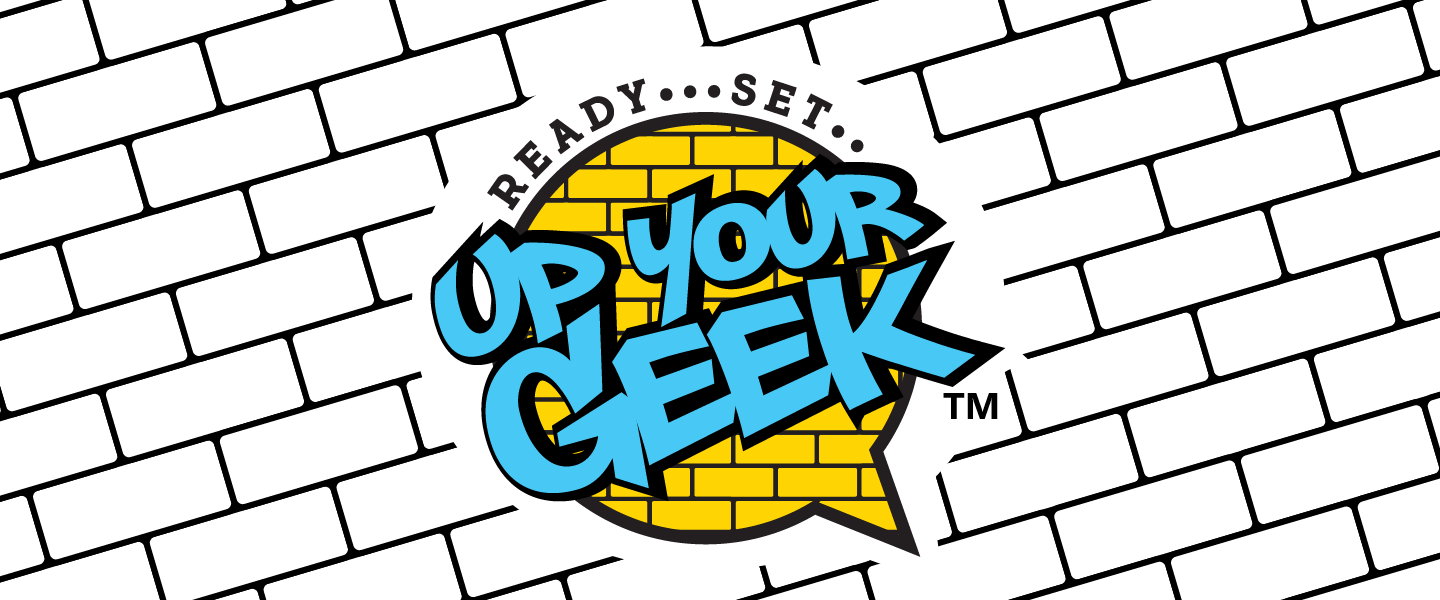

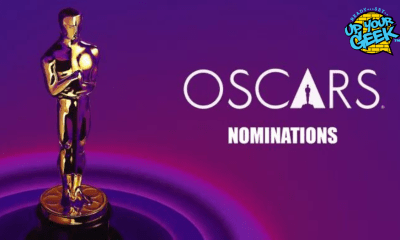




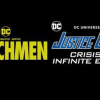














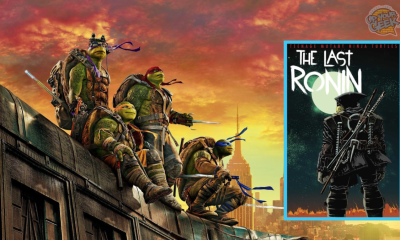






5 Comments
You must be logged in to post a comment Login